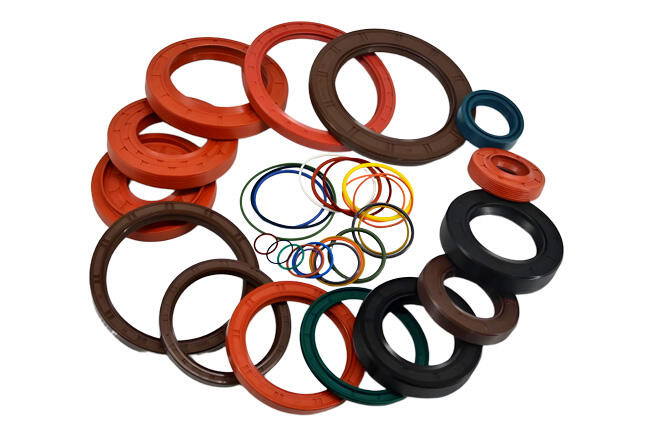In the energy sector, whether it’s wind turbines, oil extraction systems, hydraulic power units, or gas compressors, the reliability of a sealing system often determines the stability of the entire operation. Engineers and distributors frequently ask a simple but crucial question: for energy equipment, should we use oil seals or O-rings? The right answer depends on the operating environment, type of motion, and medium involved — not merely on the product name.
Oil seals are primarily used in rotary motion applications, such as gearboxes, electric motors, and turbine shafts. Their flexible lip design maintains a thin oil film on the rotating shaft, preventing lubricant leakage and keeping out dust or contaminants. O-rings, on the other hand, are better suited for static or reciprocating motion, such as valve connections, pressure control assemblies, or hydraulic cylinders. They rely on uniform compression deformation to ensure tight sealing under high pressure. In most energy systems, both components are used together, forming a complete sealing structure that handles complex temperature, pressure, and motion conditions.
When it comes to materials, the energy industry sets higher requirements than ordinary industrial machinery. High temperature, strong chemical media, and continuous vibration are typical challenges. Common materials include FKM (fluorocarbon rubber), HNBR (hydrogenated nitrile rubber), and PTFE (polytetrafluoroethylene).
FKM provides excellent resistance to heat and oil, suitable for turbines and compressors operating up to around 200°C.
HNBR balances flexibility and abrasion resistance, making it ideal for oilfield pumps and hydraulic systems.
PTFE is widely used in natural gas and nuclear applications, where it resists aggressive chemicals and extremely high pressures.
Field maintenance often reveals that seal life differs greatly even under similar equipment setups. The main reason is usually compatibility. For example, a standard oil seal may fail quickly in a wind turbine due to temperature gradients and shaft misalignment, while a double-lip high-temperature oil seal with dust protection can significantly extend operational life. In contrast, valve blocks or hydraulic manifolds rely more on O-rings to maintain internal pressure balance without increasing friction losses.

For distributors and industrial buyers, selection should be based on three key aspects:
Define the motion type — rotary, reciprocating, or static.
Identify the operating medium, temperature, and pressure.
Evaluate total cost versus maintenance frequency.
A trusted sealing partner is just as critical as the product itself. Beyond supplying components, leading manufacturers provide engineering guidance and customization. NQKSF, for example, integrates manufacturing and R&D with over three decades of industry experience. With a fully equipped production facility and a provincial innovation center, NQKSF offers:
Standard parts with fast delivery, covering over ten thousand O-ring and oil seal specifications.
Customized sealing solutions, from material selection and structure design to prototype testing.
Technical support for system optimization, helping reduce maintenance costs and improve overall reliability.
Recognized as a high-tech enterprise and a leader in precision sealing manufacturing, NQKSF supplies clients in more than 80 countries. Its products are used across sectors such as renewable energy, oil and gas, chemical processing, and heavy industrial equipment.
As energy systems become more intelligent and efficient, the demand for sealing reliability grows in parallel. Choosing between oil seals and O-rings is not a matter of preference — it’s about understanding application dynamics and engineering compatibility.
 Hot News
Hot News